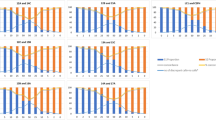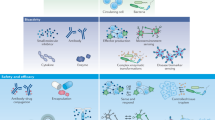Abstract
We live in an era of an important turning point in the relationship between ethics (or, more accurately, bioethics) and science, notably due to both public interest and the gradual tightening of the gap in time between scientific discoveries and ethical reflection. The current bioethics debates of emerging situations (pluripotent stem cells, gene therapy, nanotechnology) have undoubtedly contributed to this change. Today, science happens and bioethics reflects on the possibilities, considers the risks, and advances proposals, which, without being scientific, can also imprint a mark on the path of scientific development. In this article, through the narrative of stem cell research, we will try to illustrate how bringing a bioethical viewpoint to the scientific debate can become a healthy exercise in both ethics and science, especially as narratives shift, as was the case in this field due to the introduction of induced pluripotent stem cells, the advent of which is not easily dissociated from the controversies related to embryo research. We should perhaps welcome this trend as promising for the future relationship between ethics and scientific research, providing a stimulus (and not a block) to the ever-evolving scientific discourse.
Similar content being viewed by others
Log in or create a free account to read this content
Gain free access to this article, as well as selected content from this journal and more on nature.com
or
References
Patrão Neves MC : Autonomia e responsabilidade da pessoa; in Actas do IV Seminário do Conselho Nacional de Ética para as Ciências da Vida(eds): Poderes e limites da genética. Lisboa: Conselho Nacional de Ética para as Ciências da Vida, 1997, pp 3–8.
Durand G : Introdução Geral á Bioética: História, Conceitos e Instrumentos. Edições Loyola: Lisboa, 2003.
Whitney SN, Schneider CE : A method to estimate the costs of lives in ethical board review of biomedical research. J Int Med 2011; 269: 392–406.
Whitehouse P : The rebirth of bioethics: extending the original formulations of van Rensselaer Potter. Am J Bioeth 2003; 3: 26–31.
Tristram Engelhardt H : Bioethics critically reconsidered: living after foundations. Theor Med Bioeth 2012; 33: 97–105.
Archer L : Bioética: avassaladora, porquê? Brotéria 1996; 142: 449–472.
Ramalho-Santos J : Science on the edge: some reproductive biology paradigms; in Santos BS, (ed).: Cognitive Justice in a Global World: Prudent Knowledge for a Decent Life. Lanham, MD, USA: Lexington Books, 2007, pp 251–269.
Thomson JA, Itskovitz-Eldor J, Shapiro SS et al: Embryonic stem cell lines derived from human blastocysts. Science 1998; 282: 1145–1147.
Shamblott MJ, Axelman J, Wang S et al: Derivation of pluripotent stem cells from cultured human primordial cells. Proc Natl Acad Sci USA 1998; 95: 13726–13731.
European Group on Ethics in Science and New Technologies (EGE): Opinion no 15 Regarding Ethical Aspects of Human Stem Cell Research and Use. Brussels, 2000, in http://ec.europa.eu/european_group_ethics/docs/avis15_en.pdf.
National Bioethics Advisory Commission (NBAC): Ethical Issues in Human Stem Cell Research. Washington, 1999, in http://bioethics.georgetown.edu/nbac/stemcell.pdf.
Thomson JA, Odorico JS : Human embryonic stem cell and embryonic germ line. Trends Biotech 2000; 18: 53–57.
Figueiredo H : Aspectos técnicos da clonagem; in Gabinete de Investigação de Bioética da Universidade Católica Portuguesa(eds): Clonagem o risco e o desafio. Porto: Gabinete de Investigacão de Bioética da Universidade Católica Portuguesa, 2000, pp 15–22.
National Institutes of Health (NIH): Stem Cells: Scientific Progress and Future Research Directions. Maryland: Department of Health and Human Services, 2001, in http://stemcells.nih.gov/info/2001report/2001report.htm.
Ramalho-Santos J : Human procreation in unchartered territory: new twists in ethical discussions. Hum Reprod 2011; 26: 1284–1287.
Hipp J, Atala A : Sources of stem cells for regenerative medicine. Stem Cell Rev 2008; 4: 3–11.
Broxmeyer H, Douglas GH, Hangoc G et al: Human umbilical cord blood as a potential source of transplantable hematopoietic stem/progenitor cells. Proc Natl Acad Sci USA 1989; 86: 3828–3832.
Buchheiser A, Liedtke S, Leendert H, Looijenga J, Kogler G : Cord blood for tissue regeneration. J Cell Biochem 2009; 108: 762–768.
Kolata G : Scientists bypass need for embryo to get stem cells. The New York Times 2007, in http://www.nytimes.com/2007/11/21/science/21stem.html.
President Council on Bioethics: White Paper: Alternative Sources of Pluripotent Stem Cells. The President's Council on Bioethics 2005, in http://bioethics.georgetown.edu/pcbe/reports/white_paper/.
Bjornson CR, Rietze RL, Reynolds BA, Magli MC, Vescovi AL : Turning brain into blood: a hematopoietic fate adopted by adult neural stem cells in vivo. Science 1999; 283: 534–537.
Wagers A, Irving J, Weissman L : Plasticity of adult stem cells. Cell 2004; 116: 639–648.
Roobrouck VD, Ulloa-Montoya F, Verfaillie CM : Self-renewal and differentiation capacity of young and aged stem cells. Exp Cell Res 2008; 314: 1937–1944.
Conrad S, Renninger M, Hennenlotter J et al: Generation of pluripotent stem cells from adult human testis. Nature 2008; 456: 344–349.
Kossack N, Meneses J, Shefi S et al: Isolation and characterization of pluripotent human spermatogonial stem cell-derived cells. Stem Cells 2009; 27: 138–149.
Kazanis I : Can adult neural stem cells create new brains? Plasticity in the adult mammalian neurogenic niches: realities and expectations in the era of regenerative biology. Neuroscientist 2012; 18: 15–27.
Jiang Y, Jahagirdar BN, Reinhardt RL et al: Pluripotency of mesenchymal stem cells derived from adult marrow. Nature 2002; 418: 41–49.
Testa G, Borghese L, Steinbeck JA, Brostle O : Breakdown of the potentiality principle and its impact on global stem cell research. Cell Stem Cell 2007; 1: 153–156.
Alikani M, Munné S : Nonviable human pre-implantation embryos as a source of stem cells for research and potential therapy. Stem Cell Rev Rep 2005; 1: 337–343.
Meissner A, Jaenisch R : Generation of nuclear transfer-derived pluripotent ES cells from cloned Cdx2-deficient blastocysts. Nature 439: 212–215.
Taei A, Gourabi H, Seifinejad A et al: Derivation of new human embryonic stem cell lines from preimplantation genetic screening and diagnosis-analyzed embryos. In Vitro Cell Dev Biol Anim 2010; 46: 395–402.
Hao J, Zhu W, Sheng C, Yu Y, Zhou Q : Human parthenogenetic embryonic stem cells: one potential resource for cell therapy. Sci China C Life Sci 2009; 52: 599–602.
Robertson JA : Human embryonic stem cell research: ethical and legal issues. Nat Rev Genet 2001; 2: 74–78.
Bruce DM : Stem cells, embryos and cloning – unraveling the ethics of knotty debate. J Mol Biol 2002; 319: 917–925.
Carvalho AS : Comentário ao Protocolo Adicional à Convenção dos Direitos do Homem e da Dignidade do Ser Humano face às Aplicações da Biologia e da Medicina, que Proíbe a Clonagem de Seres Humanos; in: Convenção para os Direitos do Homem e Biomedicina. Coimbra, 2008; Gráfica de Coimbra.
Takahashi K, Yamanaka S : Induction of pluripotent stem cells from mouse embryonic and adult fibroblast cultures by defined factors. Cell 2006; 126: 663–676.
Takahashi K, Tanabe K, Ohnuki M et al: Induction of pluripotent stem cells from adult human fibroblasts by defined factors. Cell 2007; 131: 861–872.
Amabile G, Meissner A : Induced pluripotent stem cells: current progress and potential for regenerative medicine. Trends Mol Med 2009; 15: 59–68.
Devolder K : Complicity in stem cell research: the case of induced pluripotent stem cells. Hum Reprod 2010; 25: 2175–2180.
Kim K, Doi A, Wen B et al: Epigenetic memory in induced pluripotent stem cells. Nature 2010; 467: 285–290.
Bock C, Kiskinis E, Verstappen G et al: Reference maps of human ES and iPS cell variation enable high-throughput characterization of puripotent cell lines. Cell 2011; 144: 439–452.
Gore A, Li Z, Fung H-L, Young JE et al: Somatic coding mutations in human induced pluripotent stem cells. Nature 2011; 471: 63–67.
Hussein SM, Batada NN, Vuoristo S et al: Copy number variation and selection during reprogramming to pluripotency. Nature 2011; 471: 58–62.
Lister R, Pelizzola M, Kida YS et al: Hotspots of aberrant epigenomic reprogramming in human induced pluripotent cells. Nature 2011; 471: 68–73.
Cyranoski D, Ledford H : Simple switch turns cells embryonic. Nature 2007; 447: 618–619.
Mieth D : Going to the roots of the stem cell debate. EMBO Rep 2000; 1: 4–6.
Acknowledgements
This work received partial financial support via Fundação para a Ciência e a Tecnologia FCT.
Author information
Authors and Affiliations
Corresponding author
Ethics declarations
Competing interests
The authors declare no conflict of interest.
Rights and permissions
About this article
Cite this article
Carvalho, A., Ramalho-Santos, J. How can ethics relate to science? The case of stem cell research. Eur J Hum Genet 21, 591–595 (2013). https://doi.org/10.1038/ejhg.2012.232
Received:
Revised:
Accepted:
Published:
Issue date:
DOI: https://doi.org/10.1038/ejhg.2012.232
Keywords
This article is cited by
-
Regulation of Stem Cell Technology in Malaysia: Current Status and Recommendations
Science and Engineering Ethics (2020)



